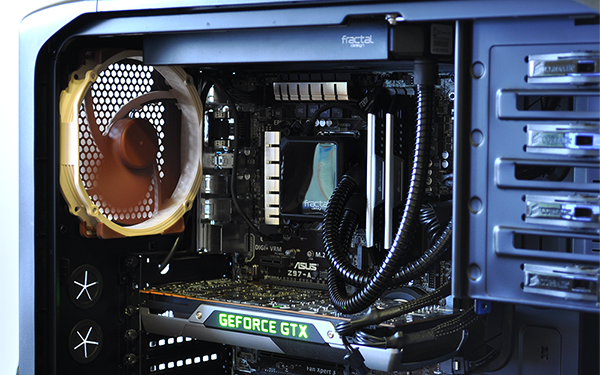Conclusion
...as a mid-pack offering for performance users, the 240mm Kelvin S24 is a capable package that tackles overclocked CPUs with ease.Fractal Design has entered the liquid-cooling market with a range of solutions designed in collaboration with Alphacool.
The initial trio of Kelvin Series coolers offers full-copper construction, a choice of form factors, stylish aesthetics and, perhaps crucially, standard fitting for simplified expandability.
Potential caveats include pump noise, which continues to be a weak spot for many liquid coolers, and a £90 price tag that puts the Kelvin S24 up against an established set of competitors.
Good build quality and a thoughtful bundle help account for the fee, and as a mid-pack offering for performance users, the 240mm Kelvin S24 is a capable package that tackles overclocked CPUs with ease. Straightforward installation is part of the appeal, and in clearing the clutter from around the CPU socket, the S24 can be a key component in achieving an attractive PC build.
Excellent performance
Good build quality throughout
Straightforward installation
Doesn't clutter the CPU socket
Simple, sleek design
Pricey at £90
Fractal Design Kelvin S24
HEXUS where to buy
TBC.
HEXUS right to reply
At HEXUS, we invite the companies whose products we test to comment on our articles. If any company representatives for the products reviewed choose to respond, we'll publish their commentary here verbatim.
Heili Toome, Brand Manager for Fractal Design, has issued the following right2reply:
[December 09, 2014]
Thank you, HEXUS, for reviewing the Kelvin S24 and awarding it as ‘HEXUS Approved’! It’s reassuring to know that professionals like your team recognize our products in high regard.
In regards to the reported pump noise at 12V, we would like to clarify this as one may run the system ‘as is’ in a more silent environment (at 9V) but also have the ability and convenience of running the pump at 12V and expanding your system, giving users more options.
The pump speed is set at 12V because at any lower level the system might not be able to handle additional components like GPU (expandability). We have focused efforts to silence the pump through noise insulation materials etc, but it is not possible to completely remove the noise. If you look at other models (systems that are expected to handle more heat output basically), they may also have relatively noisy pumps because running them at lower speeds reduces the cooling performance significantly and also puts the life time of the product at risk.
At 12V, the pump is going to emit some sound. However, the user has the opportunity to lower the voltage under 12V and the pump will be much more silent. The tradeoff is that you may lose performance and cannot expand with GPUs etc. We have been very adamant about communicating that the pump should run at 12V as there is a concern surrounding the lifetime of the product and the warranty. However, the pump can be used at 9V speed without any lifetime issues. It may be harder to handle a GPU in the loop and may lose performance, but the Kelvin Series overall can be quite silent at 9V and the warranty will support this.















